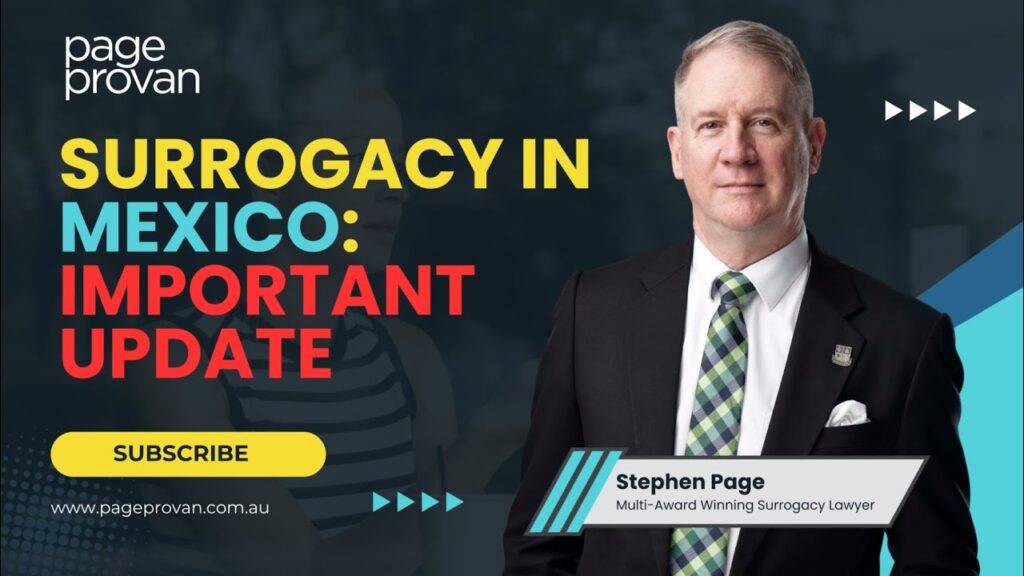How to Stay Safe in a Bad Relationship
In this video, Accredited Family Law Specialist and Award-Winning Fertility Lawyer, Stephen Page discusses the importance of putting together a risk management plan if you’re in an unsafe relationship.
Transcript
G’day, my name is Stephen Page from Page Proven Family and Fertility Lawyers, thank you for joining me today. I wanted to talk to you today about being safe.
I’ve acted for the last 30 years, in fact back to 1985, before I got admitted in 1987 for clients who have been subjected to domestic violence, and none of those clients, to my knowledge, have ever died, and some of the violence that they’ve suffered is indescribable. I won’t tell you about the types of violence other than it’s been physical, it’s been sexual, and all types of emotional abuse, really awful stuff.
The thing that I want to talk about today is safety, it’s important to be safe. It’s important to be able to go to bed at night not worrying what’s going to happen in the morning, and it’s important, evidently associated with that, not to die. You certainly don’t want your ex coming round and killing you and too often I’ve had clients who have underestimated that risk, and I’ve had to set them right. Because as we know from media reports that there are men who have killed their wives, and I should say this is not limited by men to women.
Domestic violence occurs between women towards men and in same sex relationships. But primarily it has been, according to all the statistics, by men to women, and certainly domestic homicide has been primarily by men to women. Domestic homicide by women to men is typically the woman lashing out because she doesn’t have, she thinks any way of escaping, not all cases, but that seems to be most of them.
When people separate, often the thinking is, well, go off and get a protection order and I’ll be talking in another video about getting a protection order. A protection order can only be part of a holistic approach to safety. I think it’s absolutely essential to look at the whole of the process. How are you safe? And sometimes I’m told, well, I’ve done a safety plan. That’s great. But what’s the point of doing a safety plan unless you actually measure risk?
Because there’s no point planning for safety unless you know what your level of risk is. That’s why we have a tool, and it’s one of our brochures and you’ll see it on our website, about risk assessment, and it’s originally taken from, of all places, Nashville, Tennessee Police Department, and I thought it was the best that was around when I read it. Essentially it goes like this, you can’t absolutely predict the future.
The best that you can do is look at the past, and I suppose it’s like that disclaimer that used to be on financial planning ads that went like this, past performance is no guarantee of future performance. Well, it’s like that, you can’t guarantee it, but it’s your best guide and it’s important to do this risk assessment.
With our tool, you go through it step by step. You print it out, use a pen, and like one of the pop quizzes, has this happened? Has that happened? For example, has there been any threat of suicide or death? Is there a problem with mental health issues? Are there issues of alcohol and drug use? Is there a prior criminal history? These are all red markers.
If there has been a death threat, is it specific? Obviously, the more specific there is, the more you have to worry, because a specific death threat where it’s all been planned out is extremely worrisome and really so, so concerning. Once you go through that tool, look at it, review it, and then you have an idea as to the level of risk you have.
I want everyone to be safe. I don’t want anyone committing domestic violence. But for you to be safe, the first step must be before you do a safety plan, while you’re considering obtaining a protection order, carry out that risk assessment.
For some people, counter intuitively, obtaining a protection order can place them at more danger. For most people, obtaining a protection order reduces danger, it doesn’t eliminate it, and you should never be under the illusion that a protection order is a one size fits all, it’s not, and I address this issue when I talk about in another video about what happens when you have a death threat made, because I’ve been there, done that.
But please look at our website, look at our tool about risk assessment, print it out, use a pen, then review it and once you’ve done so, talk to a domestic violence counsellor or talk to a lawyer who’s experienced in this area so that you can work out what your risk level is.
Thank you.












